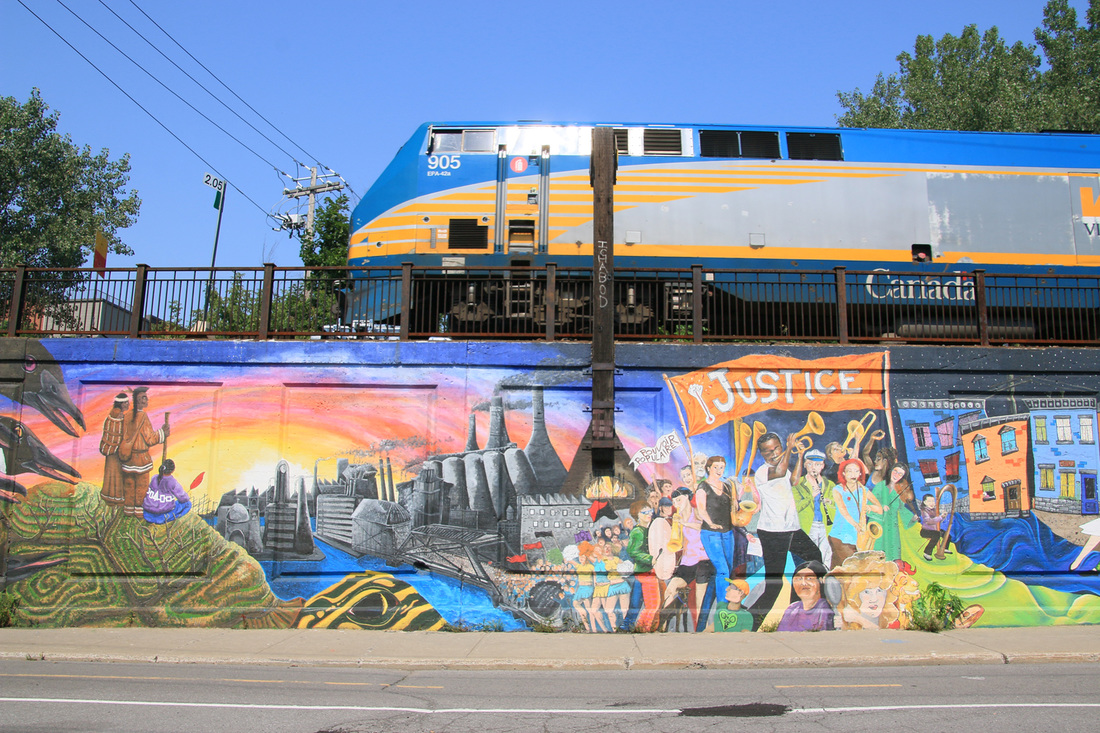During this two-week field course, we will attempt to identify and differentiate the motivations and stakeholder relationships driving UA policymaking and planning efforts, in Montréal and Portland. These differing motivations will be considered in relation to each city’s specific history, geography, political economy, policy initiatives, and shifting forms of urban governance (notably the shift towards more collaborative planning processes during the past decade). The main questions guiding our research include:
How did processes of citizen participation shape UA policy in the two cities?
What were the key areas of contention in the process, were they overcome, and if so, how?
How have these UA policy and planning efforts been perceived by the public and to what extent have these policy changes impacted practice on the ground?
Urban Agriculture in Montréal:
42% of Montréal inhabitants practice urban agriculture (!)
The city has 95 community gardens (8500 individual garden plots) and 75 collective gardens (we will discuss the difference between community and collective gardens in a later post)
The city also boasts 83 repurposed green alleys, where residents grow edibles and ornamentals in plots supported by each borough.
The Participatory Process in Montréal:
Citizens came together in 2010 to form the Groupe de Travail en Agriculture Urbaine (GTAU), a coalition of over forty UA organizations and actors. By making use of the citizens’ ‘droit d’initiative’ the GTAU gathered over 29,000 signatures on a petition calling for a public consultation on Urban Agriculture conducted by Montreal’s Office of Public Consultation (OCPM). This 6 month consultation put city officials, organizations, and citizens in open dialogue on the future of UA in Montreal. Citizens demanded a broader recognition and endorsement of UA from the city.
Before the public consultation process, the city saw UA as more of a trend, but the participatory process revealed that urban agriculture is actually “a unifying project that has the potential to provide a distinctive image for Montréal.” For us Portlanders, the role of UA in city identity formation resonates, as many often view our city as a hub of UA and a leader in local food systems policy. However, it’s important to take into account the fact that planning processes that proclaim to be “participatory” often leave out marginalized communities. It’s important to consider whose interests are being represented and how we can strive for equity and inclusion.
Settler Occupation, Gentrification, and Urban Agriculture
When Professor Ted Rutland from Concordia joined us in the afternoon, our conversation turned to contestations over land use in Montreal. Because social and cultural processes shape the physical landscape of the city and that in turn shapes social struggles, it’s important to ask “Whose land is this?” and “Who might have claims to the land on which we want to perform urban agriculture?” In particular, the city we refer to as Montreal sits on the settler-occupied lands of the Iroquois, who grew food in large fields for a village of 2-3,000 people. In this sense, they were the first urban agriculturalists in Montreal. Fast forward 400 years or so and processes of gentrification and displacement of (predominantly white) low income and working class populations in present-day Montreal beg the questions, “Who gets to be in this place?” and “Who decides how we cultivate urban space?” How can we confront gentrification in a way that acknowledges the rights, oppression, and struggles of Native peoples? While our cities seem to present us with two options – gentrification or urban decline – there must be a third way. How can we harness the power of urban agriculture to resist rather than reinforce gentrification? We hope to explore these questions and more over the course of the next three weeks.
à demain!
- Claire and Amy

 RSS Feed
RSS Feed
